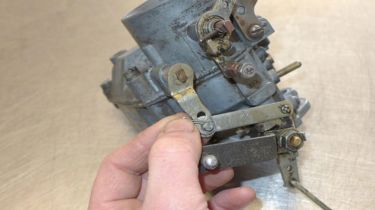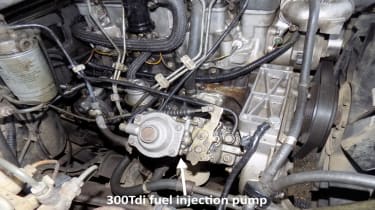How to give your TDI a boost
Forget the myths and rumours about tuning a TDI, Tim Hammond explains why it’s simple and cheap
My 300Tdi Range Rover had always suffered a lack of power. It seemed so sluggish, and was completely the opposite to my old 200Tdi Classic Range Rover, which always had plenty of go in it. A few mates had told me about their experiences with alternative boost pins fitted to their fuel injection pumps, and how they had transformed their vehicles.
At £59.99 it seemed a cheap and simple way of adding a bit of go – in fact, it sounded almost too good to be true. Please note, though, that your engine needs to be in good condition to fit this boost pin. I replaced my turbocharger before fitting the new pin because when we lifted the cap off the pump, the diaphragm was submerged in oil.
The diaphragm should not have any traces of fuel or oil – if it has, investigate why it’s there and rectify the cause before fitting the pin. The boost pin can be installed on all 200Tdi and 300Tdi engines in Defenders, Range Rovers and Discovery 1s, but not in the later EDC-controlled Discovery automatic models. Because this is a modification from standard, your insurance company should be informed. General workshop tools including 10mm spanners
Time: 30 mins Cost: from £59.99
How it works
The Bosch VE fuel injection pump has a manifold-pressure compensator (MpC) on top which contains the boost pin. The MpC alters the fuel delivery in relation to the boost pressure from the turbo. Looking at the diagram below, the top of the MpC is connected by a hose to the engine’s inlet manifold.
Thus, the turbo boost pressure is transferred to the top of the diaphragm, forcing it down against the spring below. The diaphragm centre is attached to the sliding pin beneath, which has a tapered control cone machined on it. As turbo pressure forces the diaphragm and sliding pin down, the guide pin moves inward against the sliding pin’s taper.
The guide pin movement is transferred through linkages to the fuel delivery control mechanism, thus increasing the fuel supplied to the engine. If the turbo air pressure reduces, the diaphragm and sliding pin move upwards, having the reverse effect on the system, and thus reducing the fuel supply. The new boost pin replaces the existing sliding pin, and has a different control taper which causes more fuel to be delivered to the injectors, thus affecting engine performance. Ed Evans
Test run
Now to see how the vehicle performs. If the boost pin works first time, there is no need for further alterations. But if your pump has been previously altered, your engine might now be over-fuelling and producing black smoke. If so, remove the cover again, then take everything out to adjust the star wheel inside, anti-clockwise.
Otherwise, it may be that you will need to alter the mixture (full-load) screw. This was the case with mine. The star wheel was still in the original setting, but we had to re-adjust the mixture/full load screw as mine was over-fuelling and chucking out clouds of black smoke.
You may have to do this procedure a few times to get it right. It took us five times to get it spot-on. All I have now is a small puff of black smoke when I accelerate (which is pretty typical) and you can certainly feel the extra boost kick in at around 2000 rpm.
Adjustment options
A video on the fourby.co.uk website showed the nylon spacer being cut in half to alter the spring pre-load. You actually only need to trim this down if there’s a lot of excess smoke, and mine didn’t need it. There are different ways of curing the smoke issue.
One is to adjust the star wheel – there’s a good chance this has been moved if the pump has been fiddled with in the past, and so it needs turning back. If the star wheel has never been moved, it’s best to leave it alone. Mine had been altered in the past, hence we had to re-adjust it. The mixture/full-load screw on the rear of the pump will have a tag on it if its setting has never been altered. But if the tag is broken, then someone’s been there before, and you may need to alter the excess smoke on the screw, as we had to do.
Initial smoking was sorted by making careful adjustments and re-tests
After adjustments and five re-checks on the road, the smoke was reduced to a minimal puff at the start of acceleration
Result
After two weeks driving, I have noticed a huge difference. The 300Tdi is now brisker, and is better for towing. It’s a little heavier on fuel, but this was to be expected. Our boost pin was supplied by www.Fourby.co.uk and they have a helpful video on their website showing how to install the pin.
Thanks to: Rob Marsden at Classic Range Rover for helping me with the installation.
Click on the gallery below for our handy step-by-step guide…
Find a car with the experts











